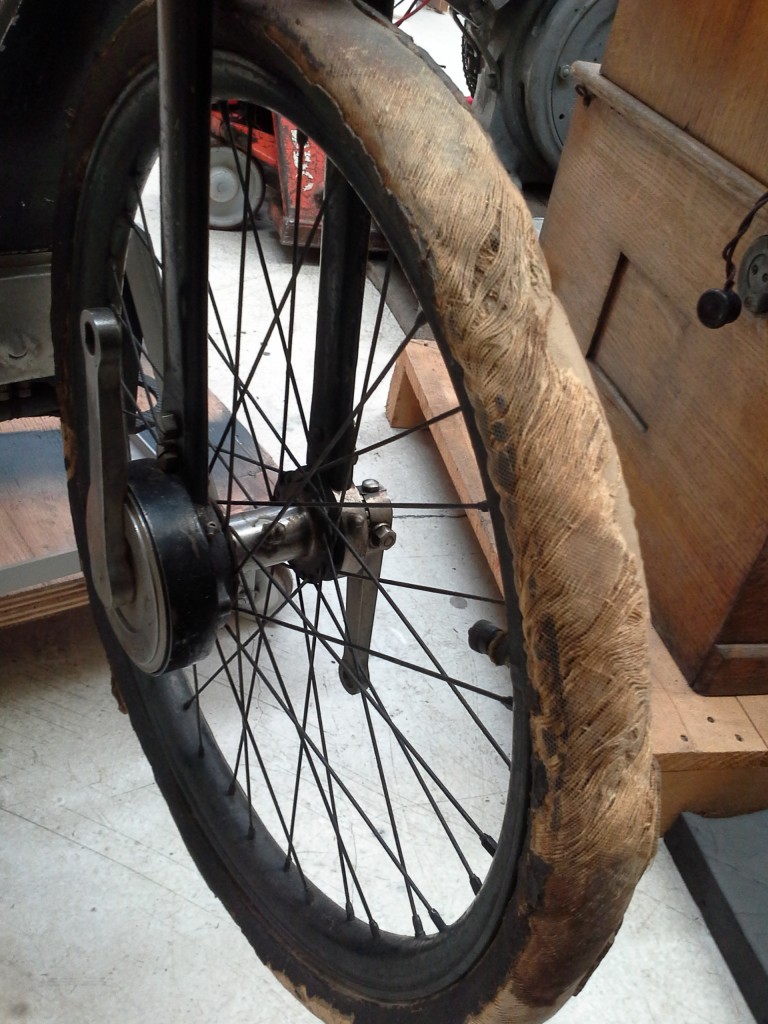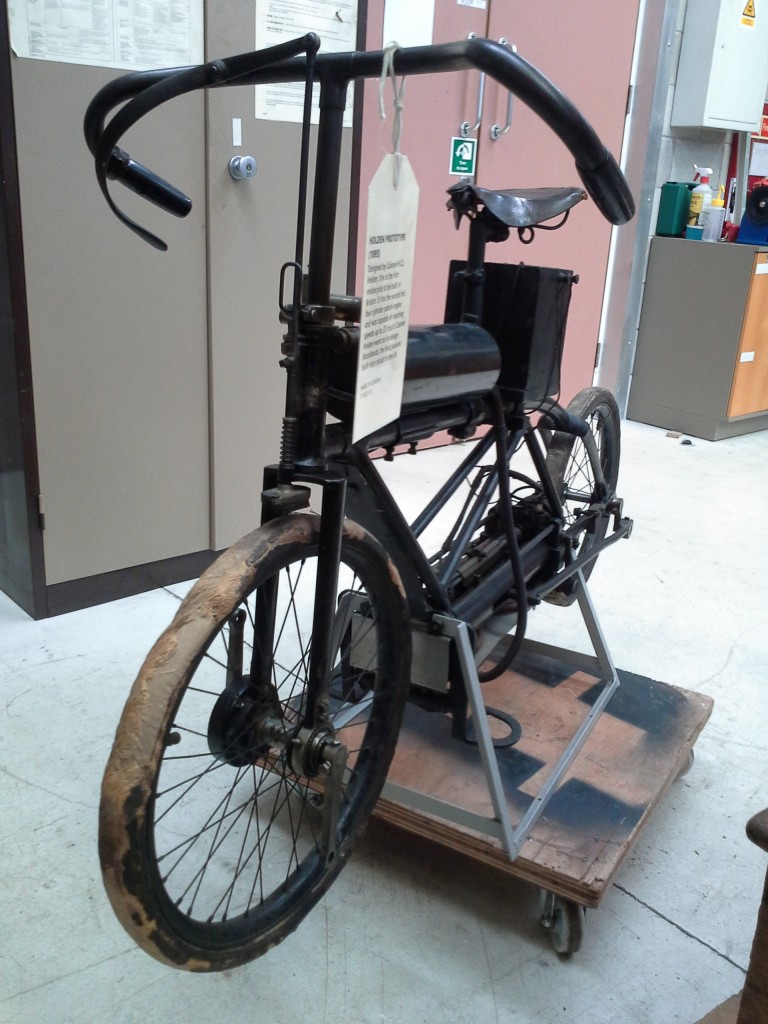The Holden Motor Bicycle was built by Colonel Holden C.B. F.R.S., who also designed the Brooklands racing circuit, in 1895. It was the first to be made in Britain and the first in the world to have a four-cylinder petrol engine, with a top speed of around 25mph.
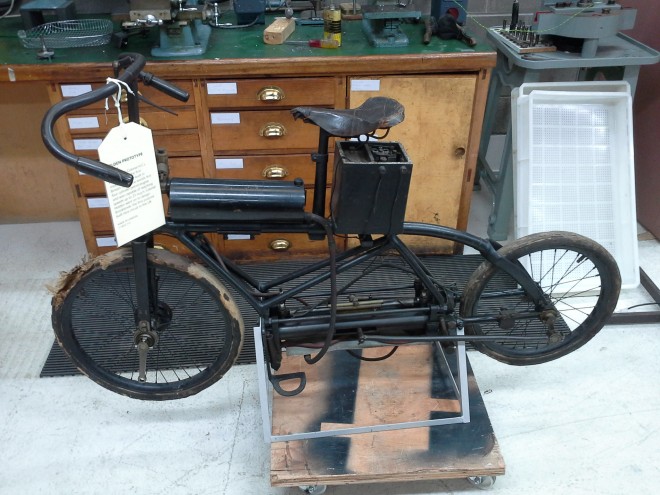
The motor bicycle needed conservation work ahead of its display in our new Science and Technology galleries opening next year. One of the main problems was its front tyre: badly damaged, it had lost most of its rubber surface and this was very noticeable. The fabric layer below this had also been damaged. There was a lot of missing material, and the fibre strands left behind were misshapen and in very poor condition. It was originally delivered to the Engineering Conservation section but because of the nature of the damage to the fabric, it was necessary to consult with, and work alongside, textile conservator Lynn McClean.
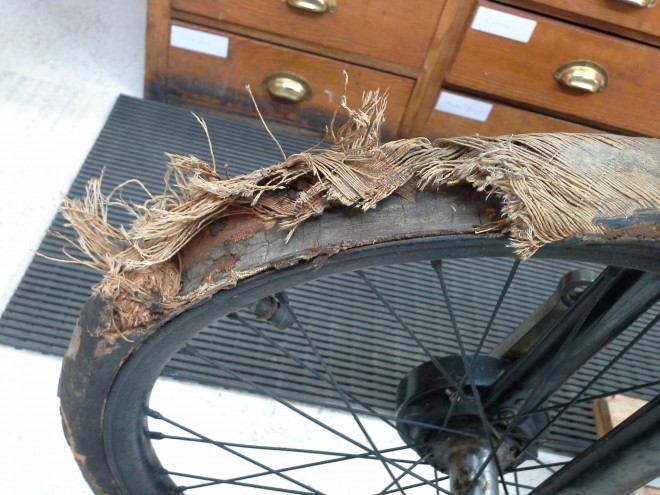
The layers of broken fibres needed to be relaxed and sorted back into their correct positions, but the loss of material was too great to be able to support these once they had been corrected. It was therefore necessary to make something that could be inserted into the gap which would mimic the original shape of the tyre. A piece of Plastazote (an inert polyethylene foam) was carved into shape and covered with cotton that had been dyed to blend in with the background colours in the surviving portion of the tyre. This was skewered at either end with cocktail sticks which were driven into the straw stuffing on either side, securing it in place.
The misshapen and broken strands were then relaxed by humidification so that they could be sorted and lain over the support in the correct positions. This was done by introducing moisture from a damp piece of blotting paper through a Gore-Tex membrane.
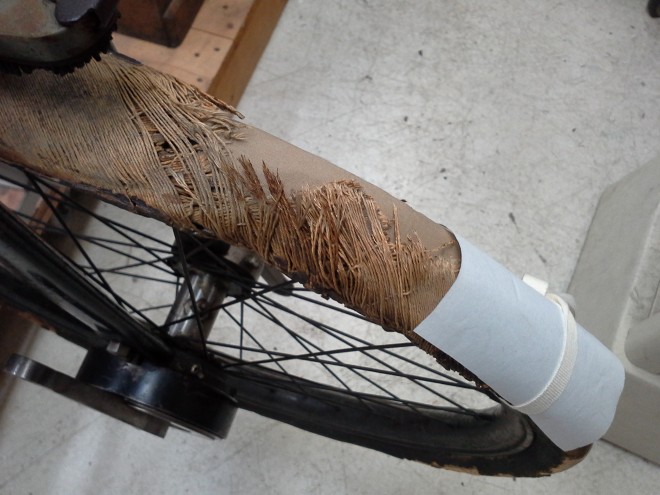
The layers of strands were positioned with a spatula and a pin, covered with the Gore-Tex membrane again, tied in position, and left to rest over the weekend. This helped them to set into their correct positions, but another layer of support was needed to hold them there in the long term.
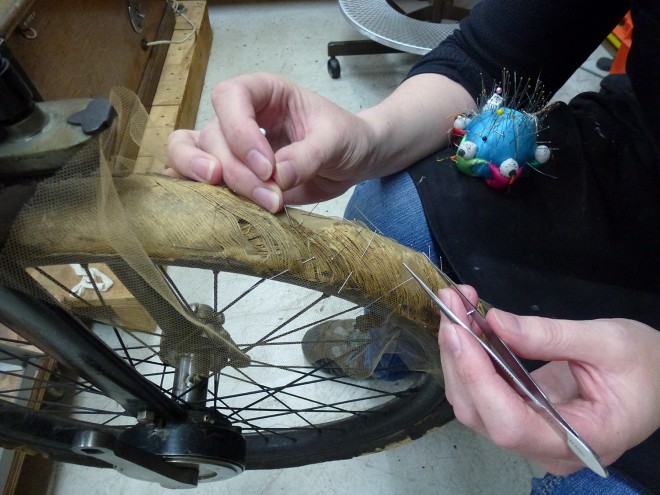
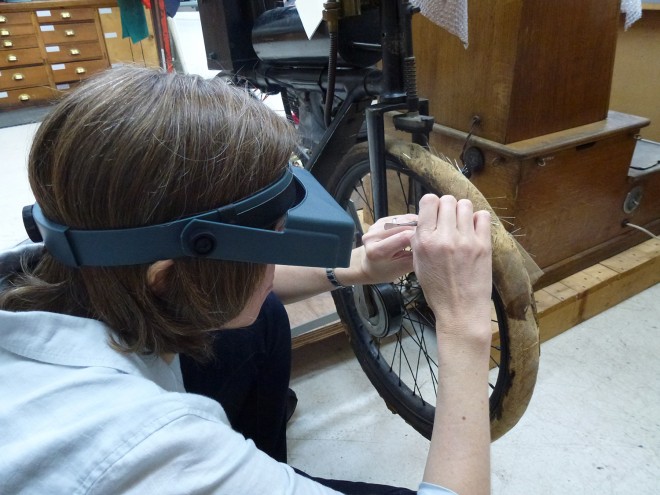
A piece of nylon net, dyed to match the original material, was laid over the top and pinned in place. It was then stitched on to the underlying support, weaving in and around the threads of the tyre to hold them securely in place. This was a tricky task and had to be done carefully so as not to split or move the original material.
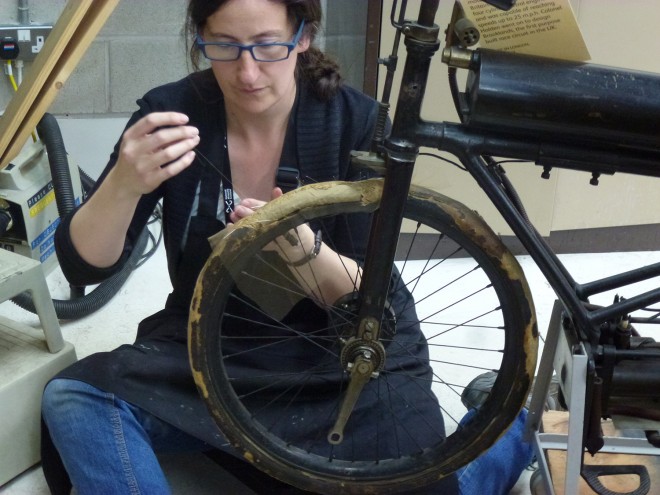
The finished tyre is now stable and no longer at risk of losing any more material. The new support should also be discreet enough so that the damaged area will no longer catch the eye of the visitor and the Motor Bicycle can be appreciated for the fantastic object it is.
Collaborating on this project has been a great opportunity and given me an insight into the world of textile conservation. It has also definitely improved my sewing skills!
